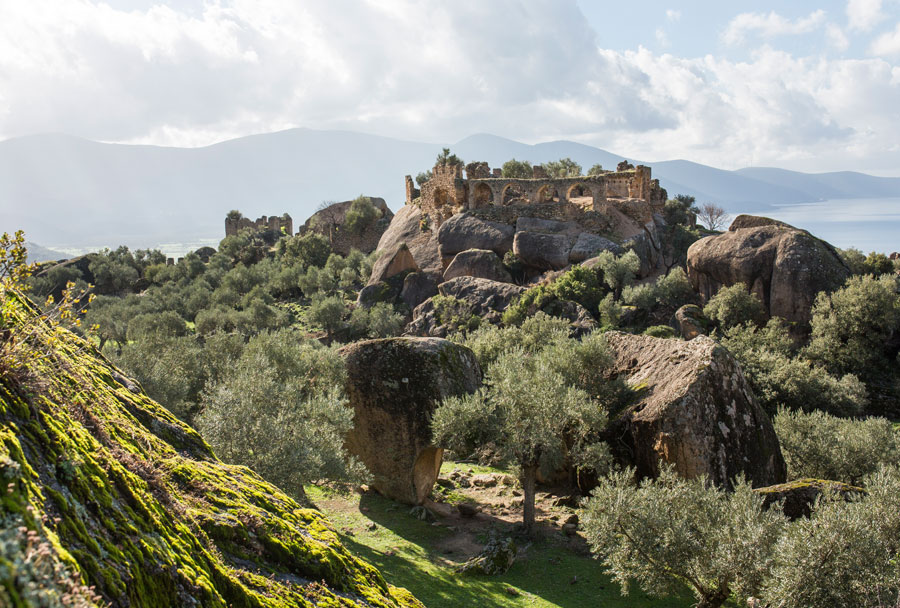Today Herakleia City is located on the ancient Milas Söke Highway. In the ancient times, the mountains of Besparmak, known as the Latmos Mountains, are covered with steep and forests and turn into the bay of Latmos. This ancient city, known for its natural beauty, is also known as Latmos or Latmia.
Herakleia of Latmos lived its most brilliant period in the Hellenistic period. It has become very rich especially due to maritime trade. The ruins of ancient times are intertwined with the village of Kapıkırı, where the extensions of Latmos Mountain to Bafa Lake are located. In fact, the old city is located on a steep slope to the east of Herakleia. The city walls have been expanded by Lysimachos in BC.287, reaching 6.5 km in length. The fortifications were reinforced with 65 towers.
Some years after Herakleia was completely abandoned, M.S. VIII. In the first half of the 9th century, Christian priests from the Sinai peninsula from Yemen made a number of monasteries and churches. These monasteries and churches spread from the Latmos Mountains to the bay and the islands on Lake Bafa.
Since 1971, the German archaeologist Anneliese Peschlow, who has been working in the area, has crossed the Latmos Rock Paintings in 1994 in a village he visited. Experts who say that humanity is very important in terms of the history of development, these paintings express that Anatolia’s first family painting is explained in a symbolic language.
In addition, it is emphasized that there are no war figures in contrast to those found in Europe. These paintings, which are not found in Western Anatolia, present information about pre-historic art as well as the relations between the men and women of the period. 170 paintings representing the transition from paleotic time to Neolithic time were found.

